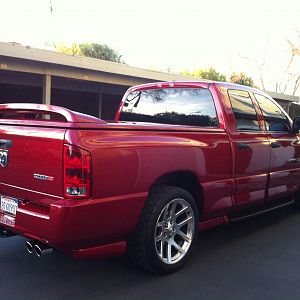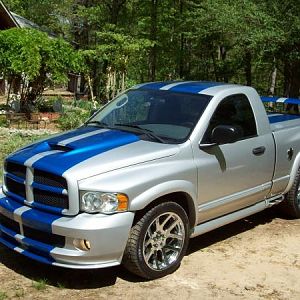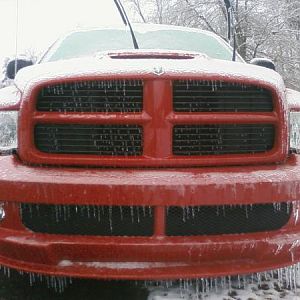The modern Hemi's have 2 spark plugs per cyl anyhow (and they aren't entirely true Hemi's but close enough).
# The hemispherical combustion chambers create better thermal and volumetric efficiency. Thus, the engine can create more power without increasing compression, which would entail a higher octane fuel.
# Valves are placed directly across from each other, as opposed to side-by-side, to allow better intake and exhaust gas flow.
# The spark plugs are better positioned to provide maximum ignition combustion in the chambers.
http://www.thehemi.com/intro.php
INTRODUCTION
Chrysler's Hemi is considered by many to be the finest engine ever mass produced. I created and maintain this website to be a useful resource for those interested in the Hemi. I am always trying to add more info, and love hearing from people that may have details to include.
EARLY HEMI R&D
The years following World War II brought upon new designs for performance. Chrysler had to find a way to increase power without increasing compression, which would require higher octane fuel. The key was thought to be in the better designed cylinder head, perhaps hemispherical with conventional valve-in-head. Using hemi heads would increase thermal and volumetric efficiency, as well as provide a low surface-to-volume ratio (thus minimizes loss due to combustion-chamber deposits). Why was this design not used earlier in autos, see as it has been around since at least 1904? Complexity and high costs did not allow easy mass production, and this rugged design loved high octane gas. Chrysler teams researched every engine available, and the hemi head design proved to be the most powerful and efficient model they could find.
See the comparison yourself -- click here.
HEMI HEAD DURABILITY
The 426 Hemi engine was designed and built with a very short deadline, but that did not stop it from being the most well-built engine ever made. The engine had a max vertical separating load of 18,800 lb @ 7200 rpm along the crankshaft center line. Frank Bialk had the job of designing the new main bearing caps, which he took advantage of the deep skirt walls by adding cross bolts through the block into the caps. With this, the engine block skirt helped the main bearing caps in resisting the loads.
Bolting the heads to the block is crucial to get max power. The hemi heads were designed with an extra bolt, the fifth head bolt, to give it the extra strength. The position of that bolt was going to be directly in the way of the pushrods and intak port, which would restrict power. Again, Frank Bialk came up with a design to bring the bolts up from the bottom instead. The new pattern worked extremely well, and the Hemi engine was put into production.
LIMITS OF THE HEMI
While the Hemi is an extraordinary beast, it does have its limitations. The big disadvantage is in the really high RPM range. With the valves opposing each other, cylinder pressure at really high RPMs is lost on the overlap cycle of the cam. At lower RPMs, say 7500 or less, the Hemi is unbeatable. Also, the Chrysler Hemi has the cam pretty low in the block and has a skirted bottom end. This can limit the crank to be used. With the classic 426 block, about 570 inches is the max. Fortunately, newer blocks have the cam moved higher in the block, so 600+ inches is easy.
see attached Hemi, Ford and Chevy heads.







